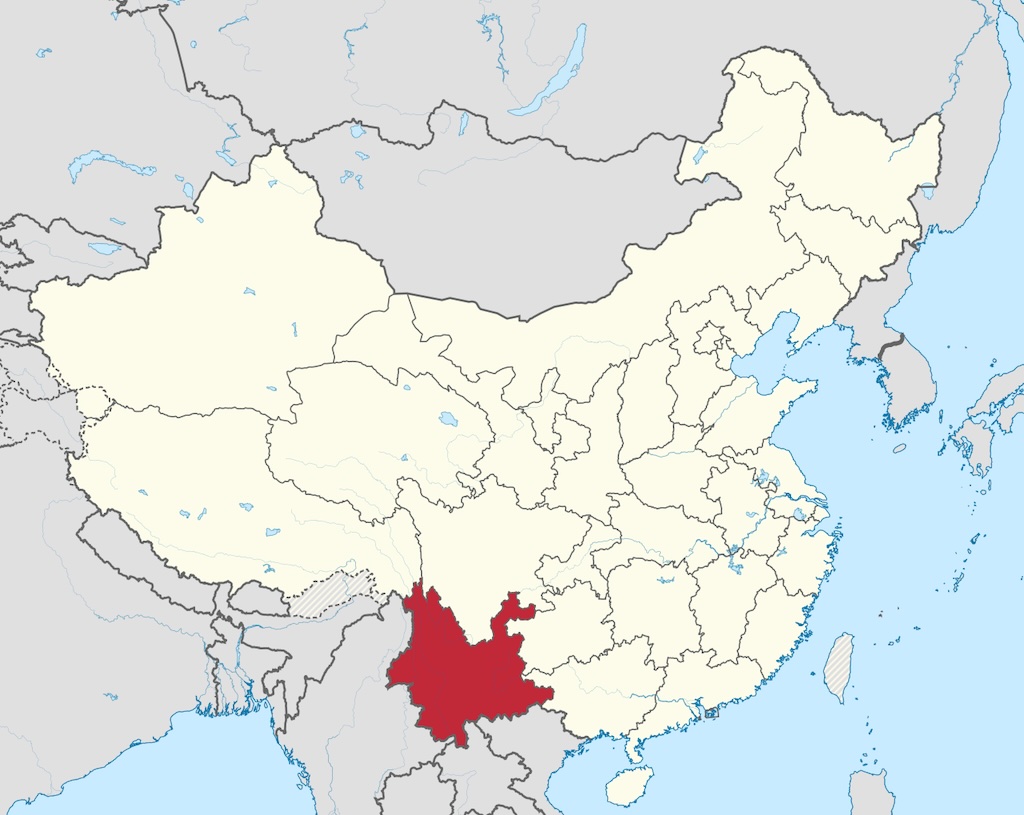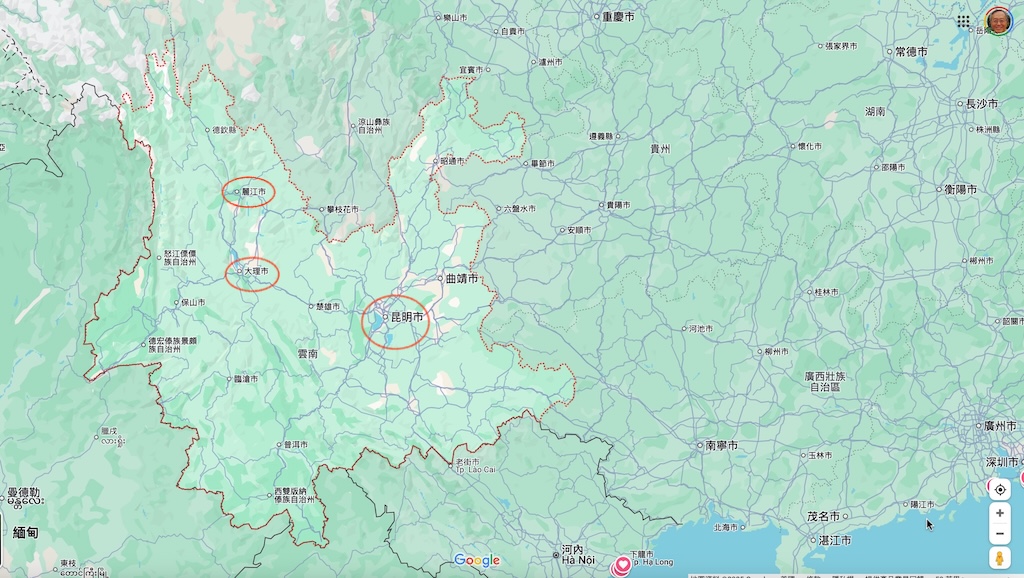Prompt to DeepSeek:
Elaborate 雲南省, China. Its history, people and attractions, especial 昆明,大理,麗江.
雲南省,中國:歷史、民族與風光的交織
概覽
雲南位於中國西南部,以壯麗的自然景觀、多元民族與深厚歷史聞名。與緬甸、老撾、越南接壤,使其成為文化交匯之地。省名「雲南」意為「彩雲之南」,源自其雲霧繚繞的山巒與肥沃的河谷。
歷史
古代王國:雲南曾是 南詔王國(8–10世紀)與 大理國(937–1253)的領地,兩者沿 茶馬古道(連接中國、西藏與東南亞的貿易要道)興盛。
帝國統合:蒙古建立的 元朝 於1253年征服大理,將雲南納入中國版圖。明清兩代加強控制,推動漢族移民。
近現代:二戰期間,昆明作為 滇緬公路 終點及美軍 飛虎隊 基地,成為抗戰重要據點。
民族與文化
雲南聚居 25個少數民族,占全省人口三分之一,代表性族群包括:
白族(大理):以 三道茶 禮儀與精緻建築聞名。
納西族(麗江):保存象形文字 東巴文,信仰藏傳佛教影響的 東巴教。
彝族、哈尼族、傣族:各有獨特節慶,如彝族的 火把節 與傣族的 潑水節。
必遊之地
1. 昆明——春城
歷史:自明朝起為省會,古屬 滇國(公元前3世紀),滇池周邊的青銅器遺址見證其文明。
景點:
石林:聯合國認證的喀斯特地貌奇觀。
滇池:湖光山色與歷史遺跡交融。
滇越鐵路:法國殖民時期的工程遺產。
美食: 過橋米線 與野生菌料理不可錯過。
2. 大理——古國門戶
歷史:白族建立的 大理國 都城,以佛教立國,崇尚和平。
景點:
崇聖寺三塔:唐代佛塔,歷經地震屹立不倒。
洱海:環湖騎行,感受高原湖泊的靜謐。
大理古城:石板路與白族民居相映成趣。
文化: 三月街 市集延續茶馬古道貿易傳統。
3. 麗江——納西文化之心
歷史:明代商貿重鎮,1997年獲聯合列為 世界文化遺產。
景點:
麗江古城:水道縱橫的納西木結構建築群。
玉龍雪山:神聖雪峰,可乘纜車俯瞰冰川。
黑龍潭:倒映雪山的經典庭園景致。
文化: 東巴儀式 與使用古樂器的 納西古樂 表演。
結語
雲南的魅力,在於其從喜馬拉雅餘脈到熱帶西雙版納的自然奇觀,與鮮活的民族文化共存。昆明、大理、麗江等城市,濃縮了千年的歷史脈絡,使雲南成為中國民族與地理多樣性的縮影。無論是探尋茶馬古道,還是沉浸於民族節慶,這片西南邊陲之地,總能帶來獨一無二的旅程。
Yunnan Province, China: A Tapestry of History, Culture, and Natural Beauty
Overview
Yunnan, situated in southwestern China, is renowned for its breathtaking landscapes, ethnic diversity, and historical significance. Bordered by Myanmar, Laos, and Vietnam, it serves as a cultural crossroads. The province’s name, meaning “South of the Clouds,” hints at its mist-shrouded mountains and fertile valleys.
History
Ancient Kingdoms: Yunnan was home to the Nanzhao Kingdom (8th–10th century) and the Dali Kingdom (937–1253), which thrived along the Tea Horse Road, a vital trade route linking China with Tibet and Southeast Asia.
Imperial Integration: The Mongol-led Yuan Dynasty conquered Dali in 1253, incorporating Yunnan into China. The Ming and Qing dynasties later strengthened control, fostering Han Chinese migration.
Modern Era: During WWII, Kunming was crucial as the terminus of the Burma Road and base for the Flying Tigers, aiding Allied efforts against Japan.
People and Culture
Yunnan hosts 25 ethnic minorities, accounting for one-third of its population. Key groups include:
Bai (Dali): Known for traditional Three-Course Tea ceremonies and intricate architecture.
Naxi (Lijiang): Preservers of the Dongba script, a pictographic writing system, and practitioners of Tibetan-influenced Dongba religion.
Yi, Hani, Dai: Each with unique festivals like the Yi’s Torch Festival and Dai’s Water-Splashing Festival.
Attractions
1. Kunming (昆明) – The Spring City
History: Capital since the Ming Dynasty, Kunming was part of the Dian Kingdom (3rd century BCE), evidenced by bronze artifacts at Dian Lake.
Attractions:
Stone Forest (Shilin): UNESCO-listed karst formations.
Dian Lake: Scenic freshwater lake with historical sites.
Yunnan-Vietnam Railway: A French colonial-era engineering feat.
Cuisine: Famous for Crossing the Bridge Noodles and exotic mushrooms.
2. Dali (大理) – Gateway to Ancient Kingdoms
History: Capital of the Bai-led Dali Kingdom, a Buddhist state famed for its peace and prosperity.
Attractions:
Three Pagodas: Tang-era symbols of Dali, resilient to earthquakes.
Erhai Lake: A serene alpine lake ideal for cycling tours.
Dali Ancient City: Cobblestone streets and Bai-style architecture.
Culture: March Street Festival, a vibrant tradelink to the Tea Horse Road.
3. Lijiang (麗江) – Naxi Heritage Hub
History: A Ming-era trading post and UNESCO World Heritage Site since 1997.
Attractions:
Lijiang Old Town: Canals and wooden dwellings in Naxi style.
Jade Dragon Snow Mountain: Sacred peaks offering hiking and Gondola rides.
Black Dragon Pool: Iconic park with mountain reflections.
Culture: Dongba rituals and the Naxi Orchestra featuring ancient instruments.
Conclusion
Yunnan’s allure lies in its harmonious blend of natural wonders—from the Himalayas to tropical Xishuangbanna—and living cultural traditions. Cities like Kunming, Dali, and Lijiang encapsulate millennia of history, making Yunnan a microcosm of China’s ethnic and geographical diversity. Whether exploring ancient tea routes or savoring ethnic festivals, Yunnan offers an unparalleled journey into China’s southwestern frontier.
非遺科普|一苦二甜三回味的雲南茶
第一道”苦茶”的衝泡方法是先將水燒開,再把沱茶放入一隻小砂罐上烘烤,烘烤時需不停的轉動砂罐,讓茶葉在砂罐內翻滾,均勻受熱,待茶葉變成黃色,香氣瀰漫時注入沸水。
第二道”甜茶”是在“苦茶”的置茶、煮茶、烤茶的基礎上加入大理特產乳扇片,核桃仁、芝麻、紅糖等配料。
第三道“回味茶”,就是將”甜茶”的配料換成了肉桂末、花椒、生薑、蜂蜜等。此茶可謂是酸甜苦辣樣樣都有,其味甜中帶辣,回甘無窮。
• 三道茶的形成還伴隨著一個富有哲理的典故。相傳,在蒼山腳下有一位名叫楊詔月的老木匠,他有一徒弟,木匠認為他的徒弟只學到了他技藝的半分。有一天,他給徒弟出了一道題:讓徒弟上山鋸木,並把木抬下山。烈日當頭,徒弟鋸木途中飽受折磨,師父卻不允喝水休息。日落西山,木已鋸好,此時老木匠給了精疲力盡的徒弟一塊紅糖,語重心長的說:“這叫先苦後甜,學手藝和做人是一樣的,你要好好領悟。”這個故事在大理廣為流傳,也是從這個故事開始,白族的三道茶演變為白族前輩傳授技藝的禮俗。
#非遺 #茶 #三道茶 #研學 #暑假 #茶知識 #茶生活
大理白族民居“四合五天井”大理白族民居
“四合五天井”
白族民居基本特点二“四合五天井”。
- 何为“四合五天井”。“四合”说的是四个方向的四个房屋。“五天井”指的是一共有五个天井,其中由四个方向的四个房屋围合的一个天井大,这是个大天井;另在整个建筑的四个角,各有一个通道,四个通道也各有一个天井,这四个天井较小,是四个小天井。一个大天井加四个小天井,一共五个天井。
- 四合五天井”是一个四合院。“四合”由四个方向的四个房屋,也就是”一个正房+两个厢房+一个倒座房”,共同围合形成的一个建筑群合院,这个合院就是四合院。这是白族民居的一种特有的建筑形式四合院。
- 四个房屋都是楼房。白族民居四合院的四个建筑一般都建成二层的楼房,也大都做成面阔三间的硬山顶二层楼房。
4.”四合五天井”布置有方向性。白族民居以西方为主房,也就是正房居西;南北两方为两个厢房;倒座房设在正对正房的东面。
照片为云南省大理市喜洲镇喜洲古镇严家大院,从多个角度展示了严家大院的“四合五天井”特有的建筑形式。









